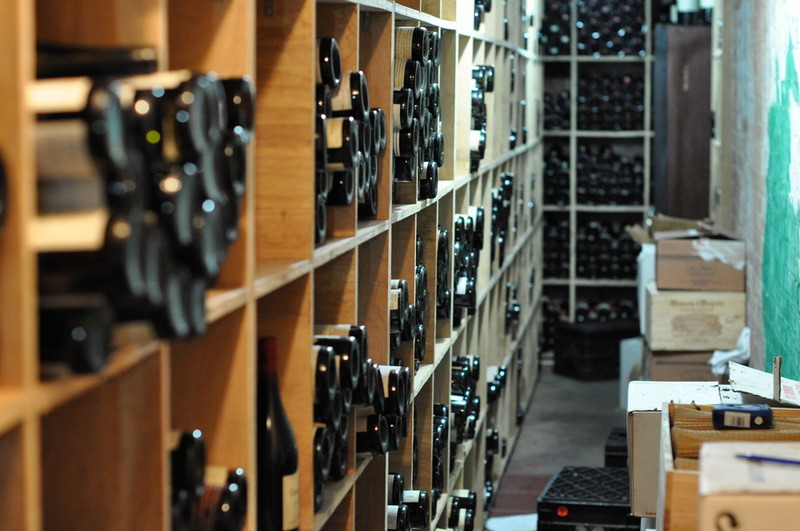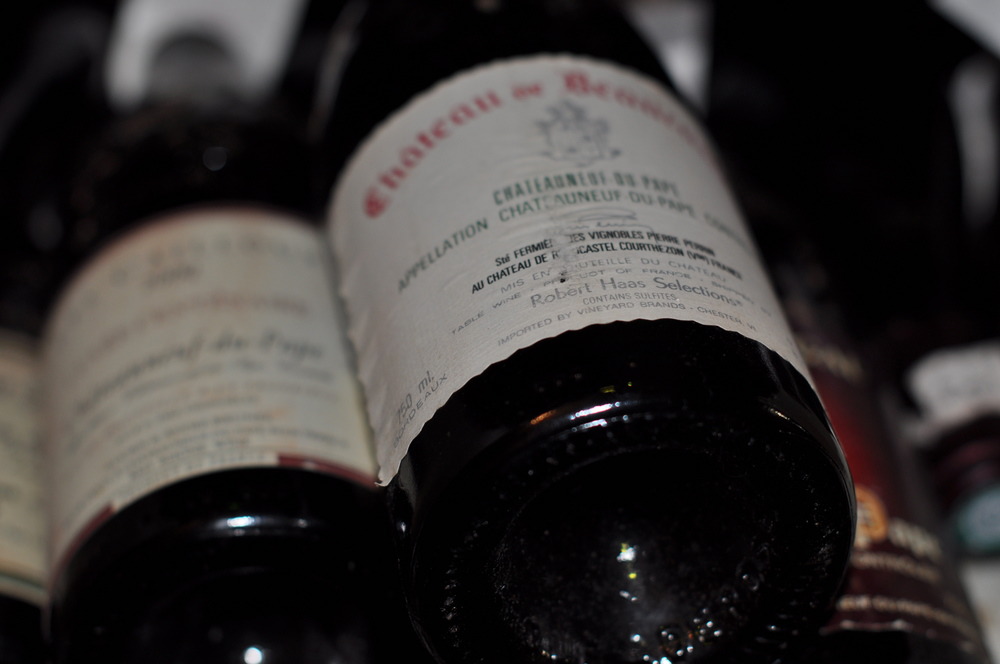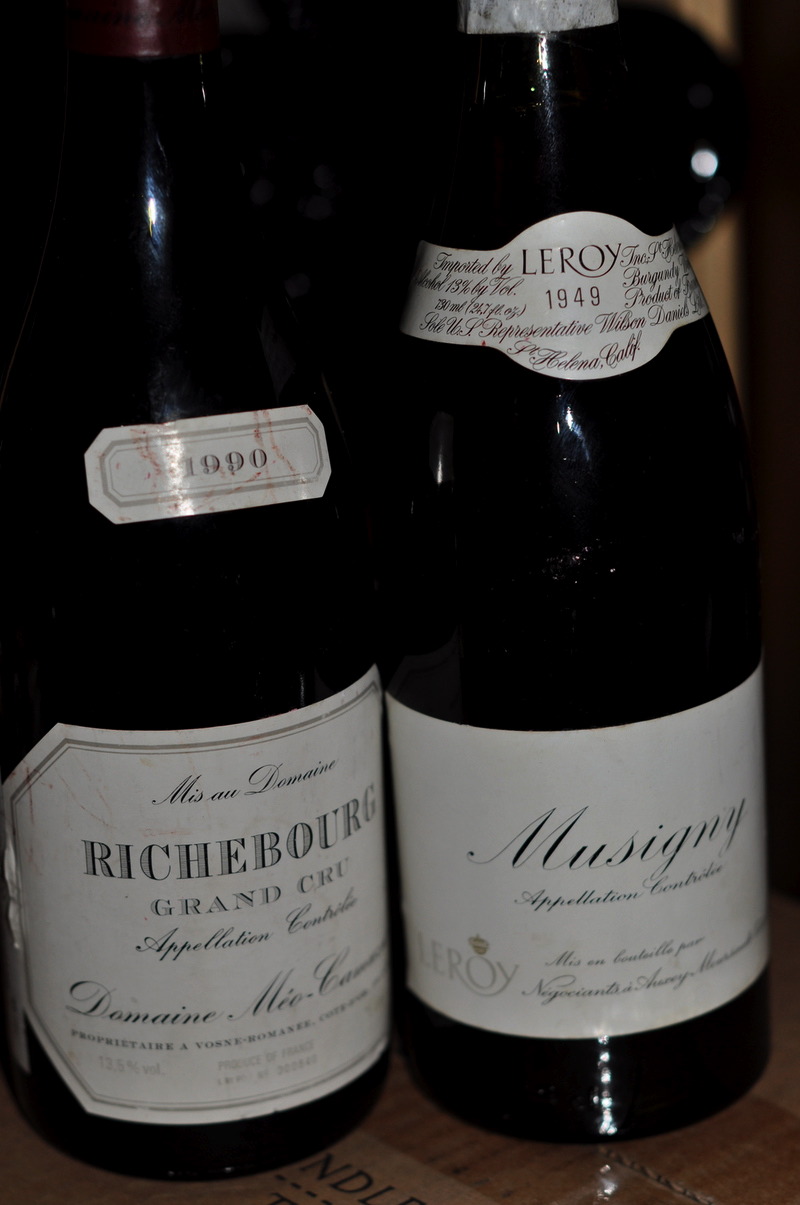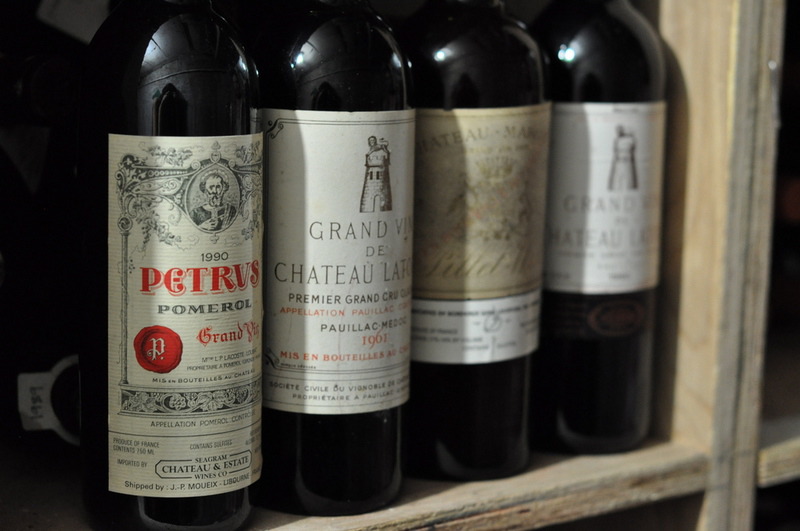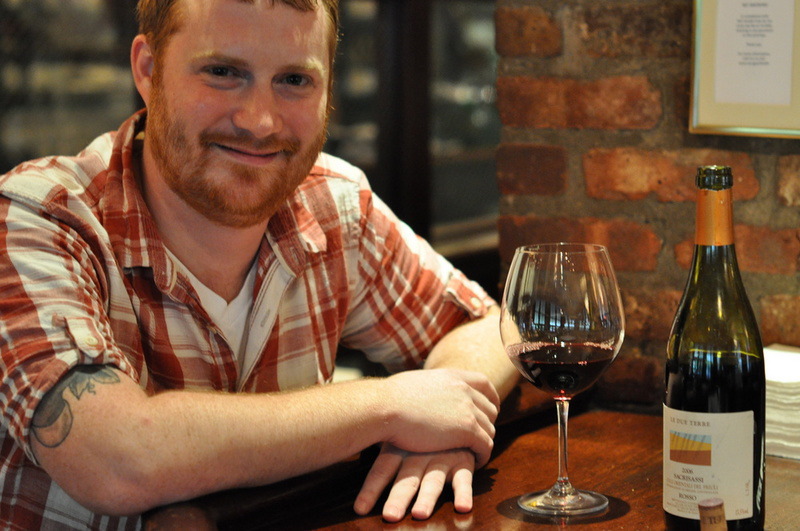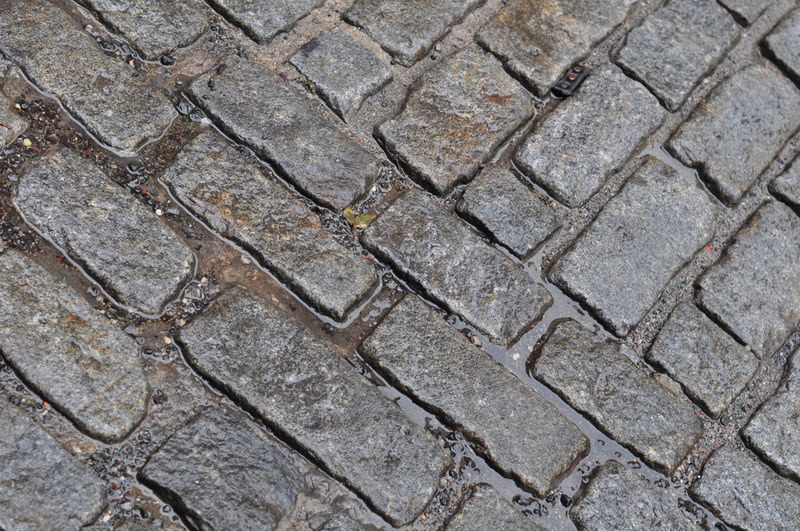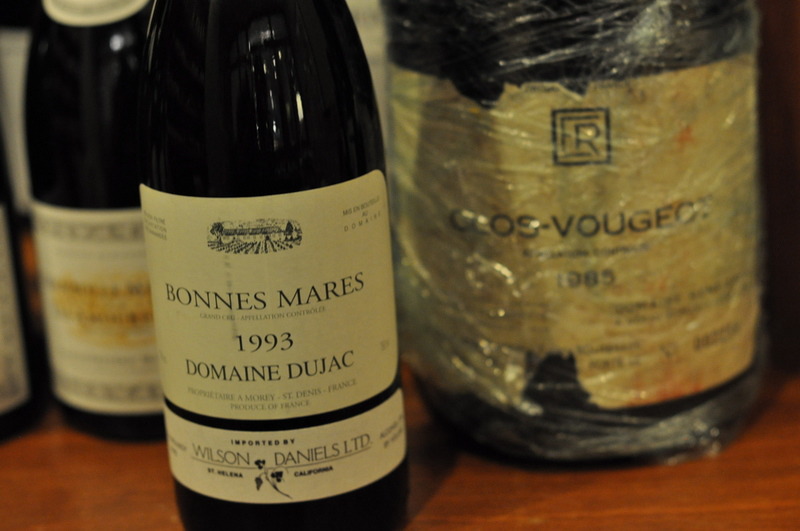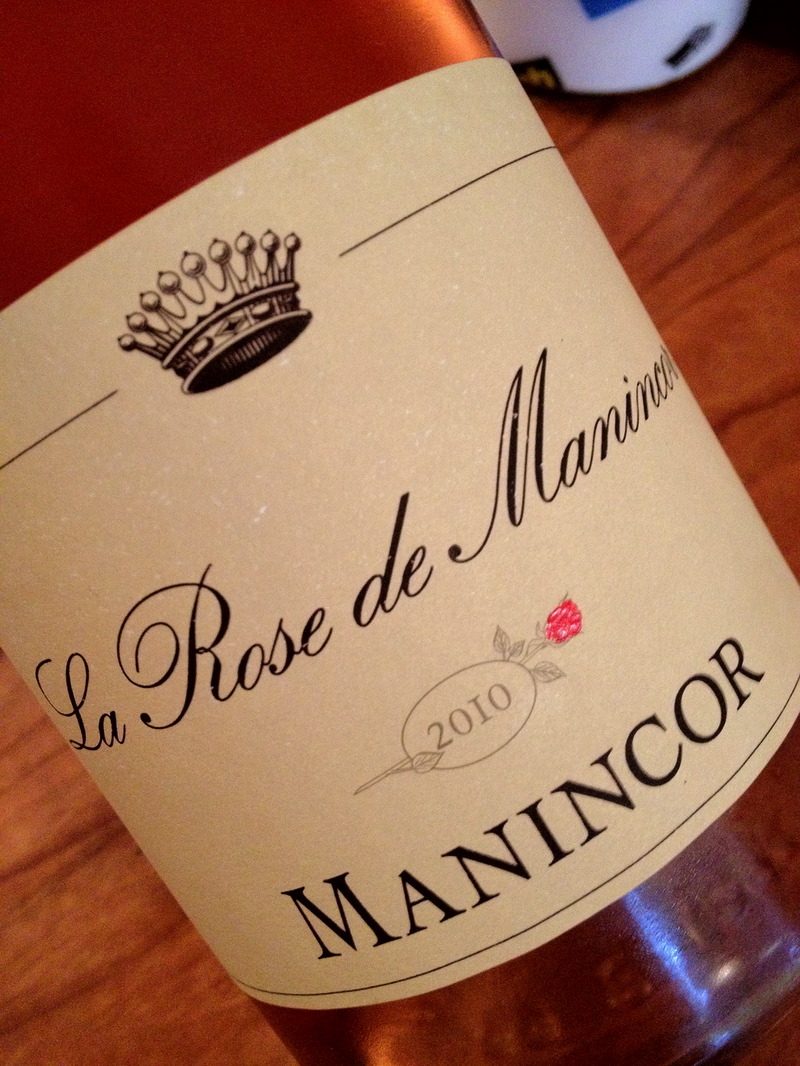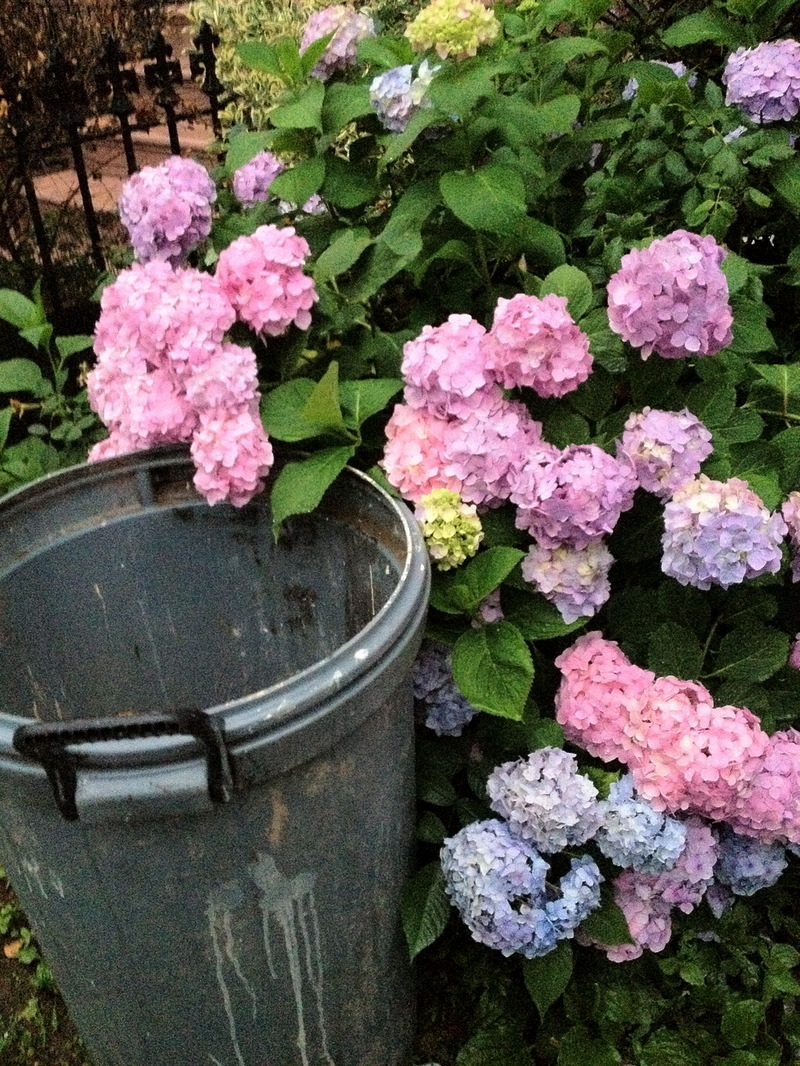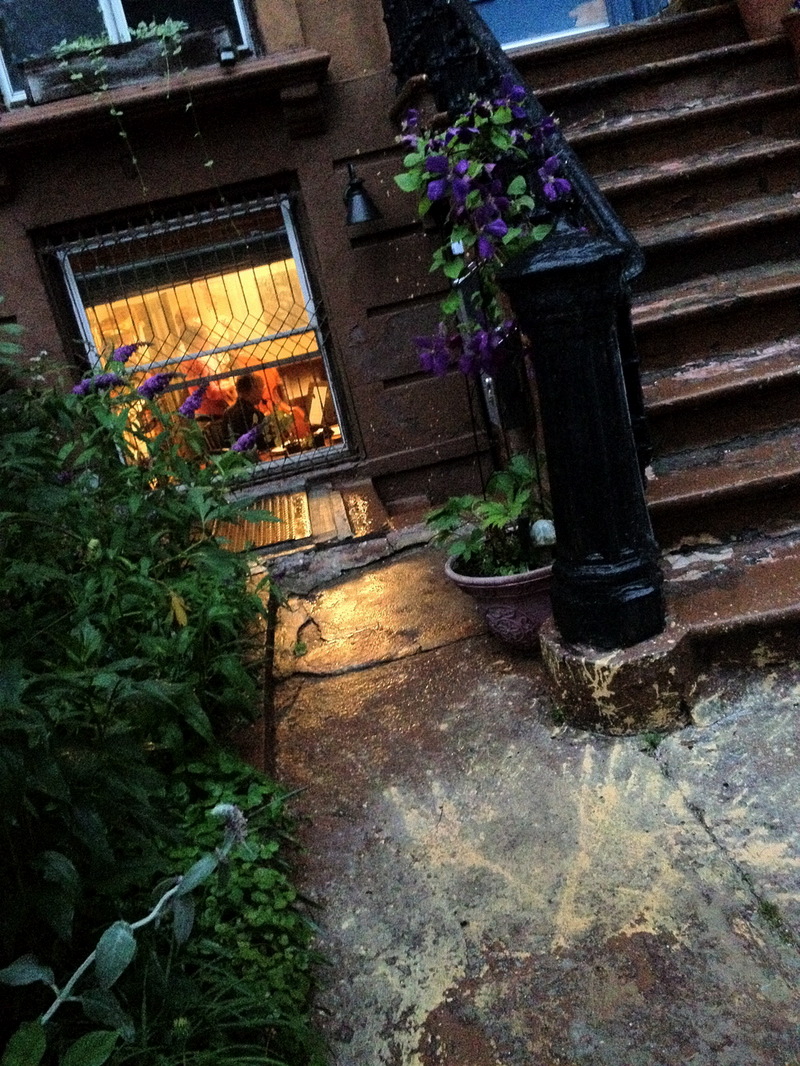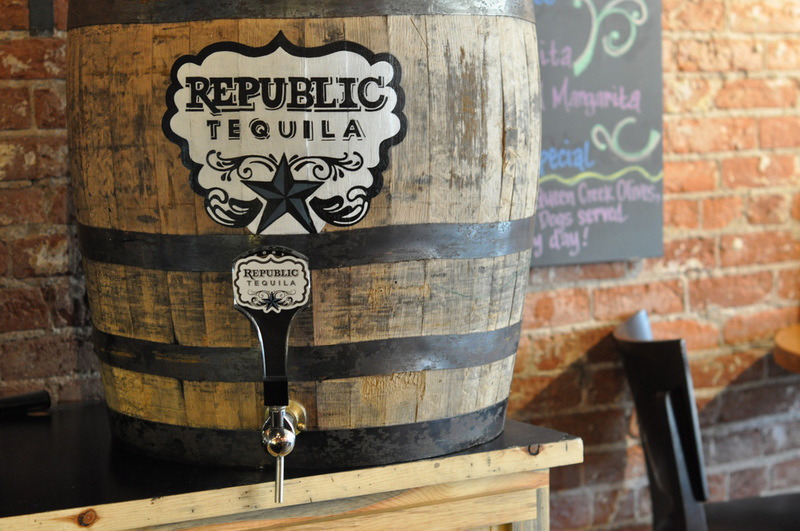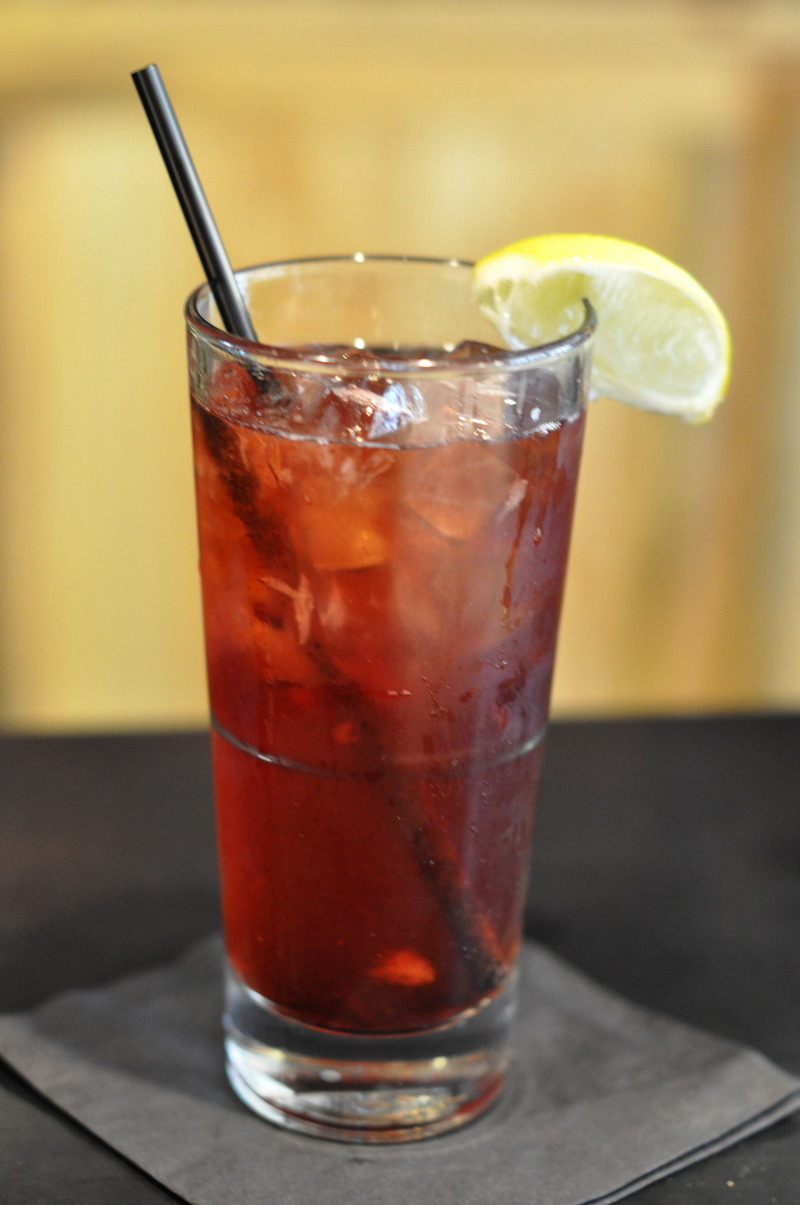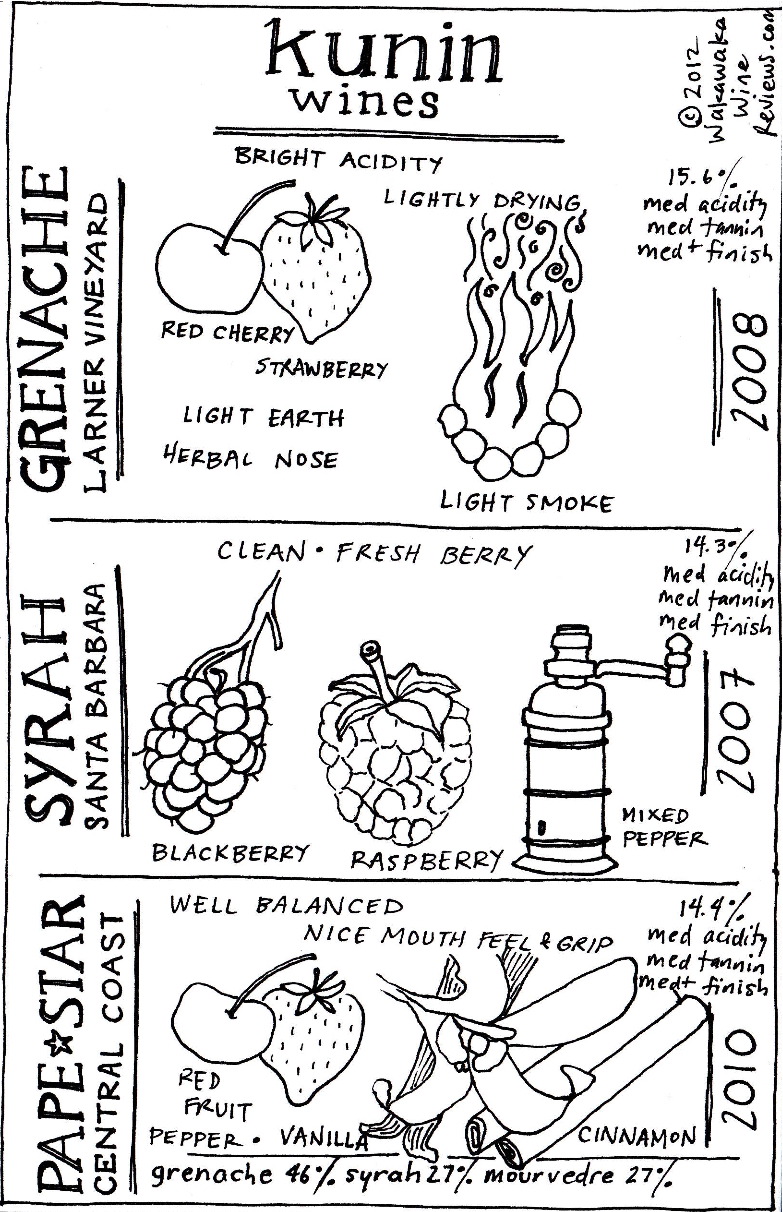Pizzicletta, South of the Tracks
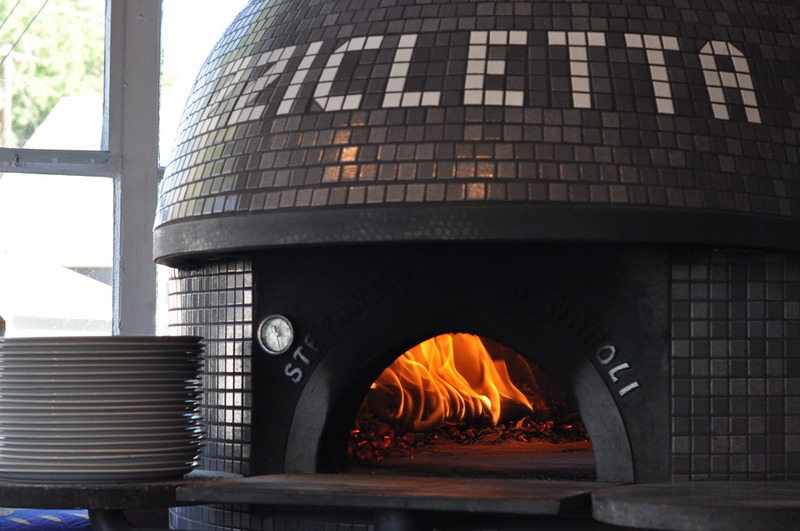
the wood fire stove at Pizzicletta–custom made and imported from Italy
Flagstaff rests 1/4 of the way between LA and Chicago heading East along the transcontinental tracks of the Burlington Northern Santa Fe Railroad. The town is divided by the line that helped establish its existence. Traffic stops, heading North to South, across the full length of Flagstaff at every road but one, where the only train bridge in town hovers above Route 66 allowing auto traffic through. At the height of its business, in the first half of 2008, before the recession hit the United States, BNSF boasted 120 trains through Flagstaff every day. That’s all cars in town stopping every 20 minutes to let the locomotive go by. Today the railroad hits on average 80 times a day but with a longer caravan and twice as many engines to pull it.
Flagstaff rests a mere hour from the Grand Canyon, and offers snow skiing (both alpine and nordic) in the Winter months. As a result, the town celebrates a (mostly) thriving tourist economy. The train steps in here too by defining what residents understand as local versus tourist areas of town. North of the tracks, in the heart of downtown Flagstaff, tourists readily visit with shops, bars, and restaurants drawing on such spending. South of the tracks, however, has tended not to pull in as much tourist attention, and so its come to be known as the locals area of downtown. As a result, businesses choosing to place themselves in this South Flagstaff neighborhood could be seen as making a statement of investing in the local community economy, while also risking surviving on less potential tourist influx. Historically, business turn over in this area has been high.
Interestingly, the economic downturn since 2008 has also coincided with a greater development of the area South of the tracks. Locals began moving their businesses to the neighborhood, partially to save on rent, and restaurants started opening doors in the less popular locale as well. Tinderbox, a highly reviewed comfort food kitchen, was one of the first in this post-2008 period to succeed at such a project, starting first as a local favorite, then soon finding themselves featured in multiple high gloss magazines.
Enter Pizzicletta.
Caleb Schiff
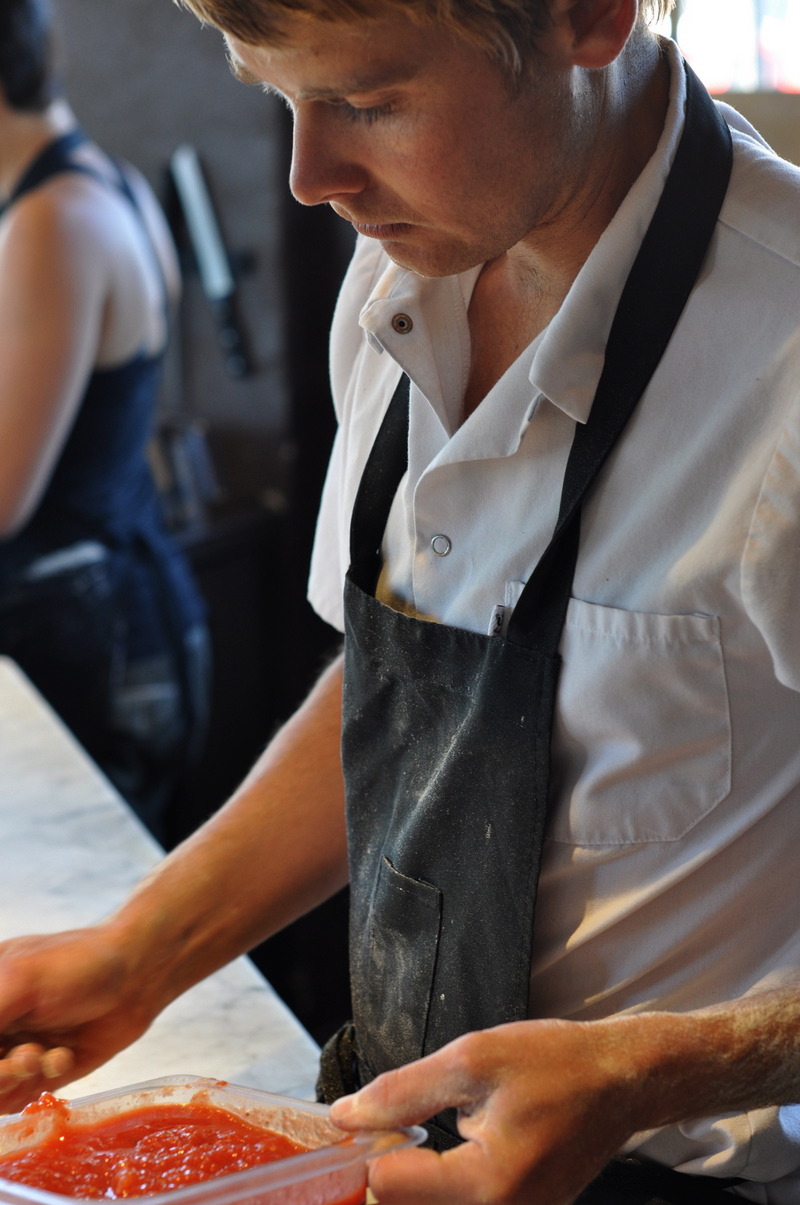
Caleb Schiff dressing a pizza with house-made tomato sauce
Having earned his Masters degree in Geology, Caleb worked for several years running a lab studying climate change at Northern Arizona University (NAU). The work consisted of 3 months spent taking samples of lake sediments in the mountains of South Central Alaska (very close to my home town, coincidentally), and 9 months of studying those samples while also supervising student projects.
Just prior to having started his work at NAU Caleb attended a conference in Iceland where he did a pre-defense presentation of his Geology thesis, then traveled to Nuremberg to visit his brother for a week. Visiting Europe for the first time he decided to take the train to Milan (again, with the trains), where he experienced wood fire pizza and breads for the first time first hand.
Caleb had spent high school and college working in bakeries, and had enjoyed the same work as a hobby through graduate school. With such an interest, the vision and flavor of wood fire ovens stayed with him after his visit to Milan. Beginning his professional lab work for NAU, Caleb was able to purchase a home in Flagstaff, and in so doing realized he could build his own wood fire oven in the back yard. Experimenting with dough and pizza recipes became such a passionate hobby friends began asking him more and more regularly when he was going to take it further.
Finally, with the idea of a pizza restaurant becoming clearer, Caleb began developing a business plan on the side, then flew to New York City to sample pizza places in Brooklyn. Eventually, the reality of his work life hit him–he spent most of his time looking at mud, and not much interacting with people, something he otherwise enjoyed. Reflecting on the value of his established career, in relation to the value of his well-developed hobby, Caleb decided to take a risk. In October, 2010, he made the leap by quitting his job at NAU with the plan of first taking a break biking across Italy (to taste even more pizza, wine, and gelato), and then work towards designing and opening his own pizzeria in Flagstaff.
Opening Pizzicletta
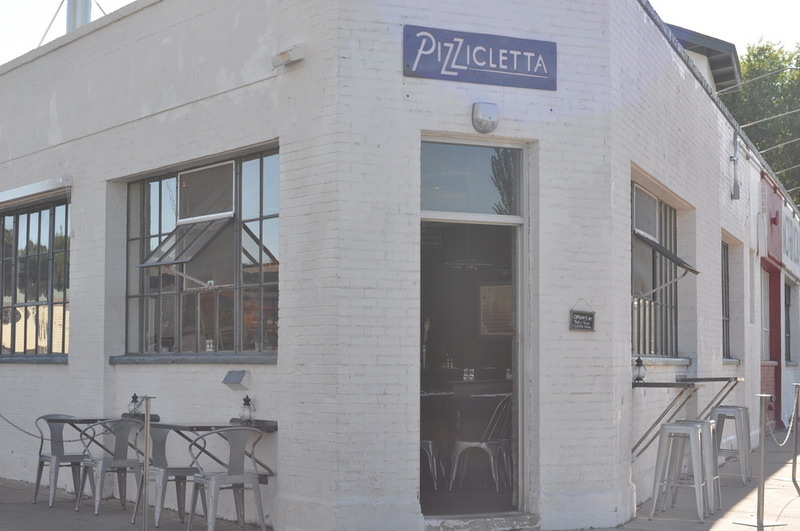
one of the entrances to heaven, Pizzicletta
Upon his return from Italy in late 2010, Caleb had gotten almost all the pieces in place for opening his own restaurant. All except a location. Walking through town one day with his friend Derek, the owner of another local food favorite, Diablo Burger, a For Rent sign showed up on a 650 foot space that had been occupied for several years by a miscellany stuff shop.
Though the space was questionable for its size, decor, and location South of the tracks, Caleb contacted the landlord and had a conversation. After a few weeks of waiting, the landlord invited Caleb to investigate the space. Though it hosted wood paneling walls, and awkward all drop ceilings, he had a hunch he could make it work and took the lease. In April 2011, bringing in an architect/designer, and having secured demolition permits, Caleb’s friends came together and started tearing the space apart. It turned out, behind the space’s 70s facade, Caleb had invested in a beautiful industrial-style venue with impressive light and a demand for focused, smart seating.
On July 5, 2011 Pizzicletta opened with a mere 15 seat capacity in a 650 square foot space. At the end of 2011 Pizzicletta won the Best of Flagstaff, Best New Restaurant Award. By the beginning of 2012, the restaurant had already been featured in several National magazines.
Life As Pizzicletta

fresh ingredients on hand on the pizza station, Pizzicletta
As Caleb explains it, the advantage of hosting a restaurant in a small space is mutli-fold. By keeping the overhead low, the pressure stays low too. With seating for only 15 at a time, he is also able to take the time to focus directly on the quality of his dough, and make contact one-on-one with at least 90% of his customers.
To fit as many people as possible in the space at a time, Caleb opted for a community table. Though he was advised against the idea of sitting strangers next to each other, customers have responded with general appreciation for the approach. Its worked to take advantage of the small space while also emphasizing the friendly nature of his business.
I asked Caleb to tell me what he thinks he offers through his restaurant, and what his goals for the business happen to be. Both questions could be answered the same way.
Caleb explains that he likes making people happy. He has seen in all his baking experience, since high school, that when the pizza is perfect that happiness happens. Additionally, in his view, a good restaurant is equal parts entertainment and great food.
The happiness response from the public has been thorough. Pizzicletta regularly celebrates repeat customers. It’s one of the few places in town where a pizza lover will visit one day, then return the very next day with friends. (My own introduction to the restaurant was by a friend that invited me to have dinner with him just a week after Pizzicletta opened last summer. It was the fifth night that week my friend had eaten there. He’d also been there twice the week before.) Locals appreciate the restaurant being established in the South of the tracks neighborhood, and the idea that Flagstaff’s long standing resident has invested in serving good food in the community. Pizzicletta has also gained enough of a quality reputation that tourists regularly travel into South Flagstaff to enjoy the good food.
In getting his restaurant started, Caleb was invited by Serious Eats, a national food news blog, to write a regular column about the process of opening a pizzeria. What’s shown through the writing is Caleb’s passionate commitment to his Pizzicletta life, and his own commitment to living a life for what he enjoys and believes in.
The story has been inspiring to readers across the country. Most expressive of this inspiration is the family that traveled all the way from Buffalo, New York to Flagstaff, Arizona just because the father had been following Caleb’s Serious Eats column, and they wanted to visit the restaurant one man cared so much to start.
The rest of the story is that running Pizzicletta is also a huge demand. In the summers, the restaurant is open 6 days a week with Caleb doing prep, cooking pizza, picking up wood in Phoenix, and managing the general details of a business. In winter, Pizzicletta is open 5 days a week. Asking Caleb how he handles the busy schedule of a keeping a young business going, he tells me about the associated fatigue, then explains at the worst of it, it is seeing how happy his customers are that makes it worthwhile. Their joy reinvigorates him to do it again the next day. When it comes to choosing to change his life, leave academia, and open a pizzeria, he has no regrets.
Pizzicletta’s Menu: Salad, Pizza, Wine, Gelato (and a bit of beer)

Pizzicletta focuses on simplicity. The pizza menu opens with a Green Goat salad, then hosts a handful of regular wood fire pizza options, as well as nightly pizza specials. In the summer, Caleb has also begun integrating Sunday Farmers’ Market Fresh Produce Specials. The dessert option focuses on a nightly gelato, often with two different flavors featured.
Inspired by his experience in Italy, Caleb has developed a well chosen, quality Italian wine list–a range of whites and reds showing a range of types but each meant to go well with food. Additionally, he serves two beers on tap.
Pizzicletta, 203 West Phoenix Avenue, Flagstaff, AZ 86001. 928-774-3242. https://www.facebook.com/Pizzicletta
***
To read Caleb’s Serious Eats Column “Building a Pizzeria” check it out here: http://slice.seriouseats.com/tags/Building%20a%20Pizzeria
To see more of the Pizzicletta space, and hear an interview of Caleb discussing his commitment to the project watch this excellent student-made video by NAU film student Austen Lavery:
***
Thank you to Caleb Schiff for taking the time to talk to me in the midst of his busy prep schedule.
Thank you to the great staff at Pizzicletta for putting up with me while I took pictures in the middle of the dinner hour.
Thank you to Pizzicletta for bringing such good food, and a wine list to match, to Flagstaff. We’re all grateful.
Copyright 2012 all rights reserved. When sharing or forwarding, please attribute to WakawakaWineReviews.com
